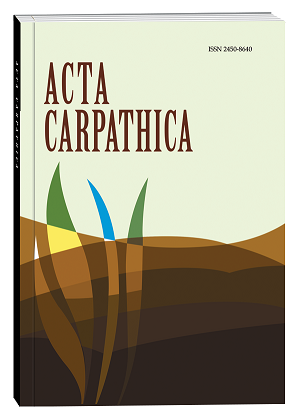SIMULATION OF TRACK STRUCTURES AS THE BASIS OF BIOSENSORS
DOI:
https://doi.org/10.32782/2450-8640.2023.1.8Ключові слова:
porous, track biosensors, model particles, adsorption centers, sensitivity.Анотація
The main factor determining the functioning of the track biosensor is the influence of the composition of an ionic liquid flowing through the track on the ion current density at a certain external voltage. When any contamination enters the ionic liquid flowing through the track, the current density changes. This change determines the sensitivity of the biosensor. The amplifying electronic circuit of the device makes it possible to vary the sensitivity parameter over a wide range. In this work, it was found that the sensitivity of the biosensor depends on the mode in which it is operated. This means that the mode of operation must be selected depending on what sensitivity is required in each particular case.
Посилання
Monosik R., Stredansky M., Sturdik E. Biosensors – classification, characterization and new trends, Acta Chimica Slovakia. 2012. Vol. 5(1). P. 109-120.
Turner APF. Biosensors: sense and sensibility. Chem. Soc. Rev. 2013. Vol. 42. P. 3184-3196.
Mehrotra P. Biosensors and their applications – A review. Journal of Oral Biology and Craniofacial Research. 2016. Vol. 6. P. 153-159.
Thevenot D.R., Toth K., Durst R.A., Wilson G.S. Electrochemical biosensors: recommended definitions and classification. Pure Appl Chem. 1999. Vol. 71. P. 2333-2348.
Damiati S., Schuster B. Electrochemical Biosensors Based on S-Layer Proteins. Sensors. 2020. Vol. 20. P. 1721.
Sabr A.K.H. Biosensors. American Journal of Biomedical Engineering. 2016. Vol. 6(6). P. 170-179.
Malik P., Katyal V., Malik V., Asatkar A., Inwati G., Mukherjee T.K. Nanobiosensors: Concepts and Variations. International Scholarly Research Notices. 2013. Vol. 2013. Article ID 327435, 9 pages. http://dx.doi.org/10.1155/2013/327435
Grieshaber D, MacKenzie R, Voros J, Reimhult E. Electrochemical Biosensors - Sensor Principles and Architectures. Sensors. 2008. Vol. 8. P. 1400-1458.
I.I. Donchev, T.S. Kavetskyy, O.R. Mushynska, O.V. Zubrytska, I.V. Briukhovetska, A.M. Pryima, H.Y. Kovalchuk, N.K. Hoivanovych, L.M. Kropyvnytska, Y.Y. Pavlyshak, T.B. Skrobach, G.M. Kossak, V.I. Stakhiv, S.S. Monastyrska, А.E. Kiv. Computer model of track biosensor. Semicond. Phys. Quant. Electron. Optoelectron. 2022. Vol. 25(4). P. 441-445.
I. Donchev, Y. Bondaruk, D. Dyachok, L. Pan’kiv, I. Pan’kiv, Y. Kukhazh, O. Mushynska, O. Zubrytska, T. Kavetskyy, D. Fink, A. Kiv. Computer modeling of biological contaminants in a track biosensor. Acta Carpathica. 2022. Vol. 1(37). P. 5-13.
I. Donchev, Y. Bondaruk, D. Fink, T. Kavetskyy, M. Kushniyazova, L. Pan’kiv, Y. Kukhazh, O. Mushynska, O. Zubrytska, A. Vinkovskaya, D. Dyachok, A. Kiv. Optimization of ion track characteristics in a track biosensor. Acta Carpathica. 2022. Vol. 2(38). P. 31-37.








